We’d be practically perplexed if you, our readers, weren’t permanently enthralled and amazed by these 3 Particularly Pleasing Porpoises. It was certainly our very great pleasure to compile the information for you. May it thoroughly edify and entertain each of you.
These presented herein, of course, represent only three of the seven currently known extant members of their Family. It’s our belief, however, that they represent excellent examples of the overall grouping. We invite you to peruse our other pages for knowledge of others.
Harbor Porpoise
Harbor Porpoise Facts
- Leading off this article about these 3 Particularly Pleasing Porpoises comes the impressive creature known simply as the Harbor Porpoise.
- Perhaps most notably, the term for this wonder serves as the most frequently used of the common names for a stunning marine mammal. Like many species, though, the stunning creature also goes by other names, in various portions of its native range.
- These terms include such diverse names as the nise, and, for unknown reasons, the somewhat humorous name of the puffing pig. Its official, scientific name, however remains that of the unique, and hard to pronounce, term of Phocoena phocoena.
- Regardless of which name one uses to refer to it, though, this magnificent creature represents one of only six or seven known surviving species of porpoise. The current discrepancy occurs due to ongoing debates over whether or not one is a subspecies.
- The first known scientific description of this marvelous cetacean occurred in 1758. This comparatively important footnote in scientific history also holds another distinction. That’s because it occurred at the hands of the Swedish zoologist, Carl Linnaeus.
- However, the animal itself had long been known to portions of mankind. That awareness, in fact, dates back to ancient times. In modern times, though, for the moment, the Harbor Porpoise appears to be maintaining a fairly sizable population.
- The IUCN nonetheless currently lists the mammal as Vulnerable. This status appears on its Red List of Threatened Species. Furthermore, this occurs due to concerns over the extreme vulnerability of the species to potential habitat loss and climate change.
Harbor Porpoise Physical Description
Although the Harbor Porpoise remains an impressive specimen of a marine cetacean, it does not earn that status due to size. Even among other porpoises, it’s smaller than average. Yet, it’s not the smallest of the porpoises. That distinction currently belongs to the Vaquita.
This fascinating mammal additionally displays a very slight degree of the physiological characteristic of sexual dimorphism. That remains a characteristic it shares with most of its relatives. In its case, though, that characteristic manifests itself in terms of mass.
That holds true since the females of this particular species have an average body weight equaling 25 – 30 percent more than the males. However, both genders attain roughly the same body length. The females, therefore, have a much thicker-bodied appearance.
In fact, each of the sexes typically reaches an average length that measures between 4.6 – 6.2 ft (1.4 – 1.9 m). In terms of weight, though, males reach an average weight of approximately, 134 lb (61 kg). Meanwhile, though, the bulkier females average a weight of 168 lb (76 kg).
The genders appear similar otherwise. The body of the animal develops as robust, being widest near the dorsal fin. The sides display a light gray, with speckling. The tail fin, back, flippers, and dorsal fin show a dark gray. The underside, though, displays a white in color.
- Kingdom: Animalia
- Phylum: Chordata
- Class: Mammalia
- Order: Artiodactyla
- Family: Phocoenidae
- Genus: Phocoena
- Species: P. phocoena
Harbor Porpoise Distribution, Habitat, and Ecology
Quite amazingly, the beautiful Harbor Porpoise has a uniquely broad range of natural habitation. It’s also simultaneously highly restricted in some ways, though. That somewhat confusing state of affairs occurs because of a combination of factors, however.
Firstly, the beautiful marine animal appears in parts of the Black Sea, the North Pacific, and the North Atlantic. Secondly, however, the animal further only appears in narrow bands. These, as it happens, most often extend along the coastal regions of the continents.
The greatest concentration appears along the coasts of northwest Europe. Its very name provides an indication of its habitat. That’s due to the fact that the cetacean only appears in shallow waters, often near, or even in, various harbors and bays in its region of habitation.
In point of fact, this stunning creature rarely dwells in waters possessing a depth of greater than 500 ft (152 m). The magnificent Harbor Porpoise also frequently travels inland waters. This extension of its range typically includes estuaries, and even far up rivers.
Throughout the entirety of its range, it feeds on a variety of prey. These mainly consist of small fish travelling in schools. But, it also consumes smaller squids and crustaceans on occasion. Understandably, though, its exact prey varies depending on individual location.
Quite sadly, reliable data about much of the life cycle of this fabulous creature presently remains in short supply. Yet, some evidence indicates that this animal prefers to stay within a limited area. This has the regrettable effect of leaving the marvel quite vulnerable.
The creature also appears that the impressive species lives a primarily solitary life. Most often, observed specimens appeared either alone, or in small groups of no more than 5 individuals. It also seems to possess a relatively short lifespan, measuring only 8 – 13 years.
Dall’s Porpoise
Dall’s Porpoise Facts
- Next up among our choices for inclusion in this compendium of 3 Particularly Pleasing Porpoises we present the magnificent animal named the Dall’s Porpoise.
- Perhaps most notably, the beautiful cetacean with this specific name presently constitutes the largest of all known extant porpoises. The truly marvelous creature also currently represents the only member classified in its genus of Phocoenoides.
- This gorgeous mammal also holds a somewhat unusual, though certainly not unknown, distinction. That’s because it bears its common name in honor of a specific individual. More specifically, though, it’s named after the American naturalist, W. H. Dall.
- Fortunately, its population numbers appear to be reasonably high, and also relatively stable. That holds true throughout its range. The IUCN, therefore, lists this particular marine mammal as a Species of Least Concern on its Red List of Threatened Species.
- This amazing porpoise further enjoys the status of a protected species within a certain portion of its natural range. Unfortunately, however, the amazing Dall’s Porpoise does not enjoy similar protection throughout the entirety of its endemic territorial range.
- That’s because it remains a commercially fished species in the country of Japan, in Asia. For the moment, the government of the country allows a quota of 17,000 individuals to be taken each year. Sadly, the animal also now faces other threats to its existence.
- For one, environmental contaminants now pollute parts of its range, including such compounds as PCB’s. It also now faces newly expanding perils. Much like other species, it finds itself threatened by the ongoing and escalating effects of climate change.
Dall’s Porpoise Physical Description
Although the beautiful Dall’s Porpoise indeed qualifies as the largest of all known porpoises, it also stands out from its brethren for other reasons, as well. This holds especially true of others of its own kind presently sharing the same approximate native territorial range.
The beautiful mammal does have the trait of sexual dimorphism in common with them, though. In the case of this particular animal that trait mainly displays itself in terms of sheer physical size. That characteristic trend holds true of countless species, though.
But this wonder of Nature and evolution doesn’t simply stop there. The species also displays the characteristic in the development of some slight variations in its basic form, as well. Thus, the physical trait presents in terms of both simple size and body shape.
Males of the Dall’s Porpoise typically attain a larger body size. This gender reaches a maximum body length of roughly 7.87 ft (2.4 m). Weights vary between individuals of both genders. This weight commonly ranges between a total of 370 – 490 lb (167.8 – 222 kg).
The male members of this intriguing species also possess a deeper caudal fin and an angled dorsal fin. Female examples of the animal, however, develop as slightly smaller in physical size, and with the different fins. This further mimics most other known porpoises.
But, both genders of the remarkable creature display the characteristic of color combinations varying widely among individuals of both genders. This, though, typically consists of being mainly black, with gray or white patches on the stomach and flank.
- Kingdom: Animalia
- Phylum: Chordata
- Class: Mammalia
- Order: Artiodactyla
- Family: Phocoenidae
- Genus: Phocoenoides
- Species: P. dalli
Dall’s Porpoise Distribution, Habitat, and Ecology
The mesmerizing cetacean known as the Dall’s Porpoise possesses a natural range that consists of the region of the North Pacific. More precisely, this range extends from the Sea of Japan to the coast of California, in the United States, and to the Bering Sea.
Scattered individuals sometimes appear as far south as lagoons in Baja California, in Mexico, however. Wherever it appears, though, it displays strong environmental preferences. Predominantly, this fascinating species of cetacean prefers to inhabit colder waters.
This usually includes waters with a temperature measuring less than 64 F (18 C). The creature also most commonly appears in offshore waters, at great depths. Some individuals do occasionally frequent deeper coastal waters, including fjords and canyons.
The Dall’s Porpoise feeds principally as an opportunistic hunter, much like many elated species. It additionally generally hunts its prey either near the surface or in mid-range depths. That prey further most commonly consists of a wide range of small fish species.
Small squids and even crustaceans are also consumed. These comprise only a small portion of the diet, though. This animal also appears to be a highly active creature. It’s further capable of reaching and maintaining great speeds, up to as much as 34 mph (55 kph).
Most commonly, this amazing animal lives in small social groups. These typically average between 2 – 20 individuals. But, large groups of as many as 100 individuals do sometimes occur, though usually for group hunting. Life expectancy appears to be 15 – 20 years.
Finless Porpoise
Finless Porpoise Facts
- Closing out this compilation of 3 Particularly Pleasing Porpoises that we have put together for you, we present the amazing mammal named the Finless Porpoise.
- The beautiful small cetacean ranks as another of those species little-known outside of its own area. It holds a place of distinction in science, however. That’s because it forms one of only seven known extant species of porpoise in the entire world.
- The creature also bears another, more specific, common name, though. That’s the longer term of the Indo-Pacific Finless Porpoise. Its scientific name, meanwhile, remains that of the all but unpronounceable term of Neophocaena phocaenoides.
- Regardless of the name applied to it, though, it’s a fascinating species. The renowned French zoologist, Georges Cuvier, made the first known scientific identification of the mammal as a distinct species. This recognition occurred in the year 1829.
- It’s also the focal point of a certain amount of debate in scientific circles. That’s due to the fact that differences of opinion exist among researchers. That situation, however, revolves around several potential subspecies of this impressive creature.
- Sadly, furthermore, the population of the the Finless Porpoise faces several threats to its existence. Its own restricted habitat range certainly qualifies as one of these. It’s also elusive, and rarely photographed, making definite counts of its numbers difficult.
- As a result, a precise estimate of its situation remains impossible to determine. Most experts nonetheless consider it to be at risk from several factors. Its greatest threat, however, consists of climate change. Presently, the IUCN lists it as Vulnerable.
Finless Porpoise Physical Description
Although impressive in its own way, the Finless Porpoise does not earn that description due to physical size. In fact, from that perspective, it qualifies as a roughly average-sized variety of porpoise. It further displays no noticeable degree of sexual dimorphism.
The typical adult of this species attains an average body length of roughly 5 ft (1.5 m). Exceptional specimens do occur, however. These, though, rarely exceed 7.5 ft (2.3 m) in length. Admittedly limited, scientific observation indicates such individuals are quite rare.
An average weight, meanwhile, equals 65 – 100 lb (30 – 45 kg). Those same exceptional specimens, on rare occasion, sometimes attain a weight of as much as 159 lb (72 kg). The animal therefore typically has a smaller body size than the average human male.
Mature adults of the Finless Porpoise also generally display the same overall pattern of color. This mainly consists of a uniform light gray color. Some specimens do manifest patches of lighter or darker shades. These usually appear near the flippers and mouth.
It does, however, earn its distinction due to other factors. That, understandably, stems from its obvious lack of a true dorsal fin. This absence makes it easily distinguishable from any other porpoise, since it’s the only known variety without such a fin.
- Kingdom: Animalia
- Phylum: Chordata
- Class: Mammalia
- Order: Artiodactyla
- Family: Phocoenidae
- Genus: Neophocaena
- Species: N. phocaenoides
Finless Porpoise Distribution, Habitat, and Ecology
One of the dangers to the awesome Finless Porpoise stems from its own zone of habitation. That’s due to the fact that it inhabits a highly specific area of the ocean. That specific area comprises part of the Indo-Pacific region, hence the other common name.
More specifically, the area in which the amazing mammal appears include a limited portion of Asia. There, the infrequently seen creature makes its home in the coastal waters of the region. It does, however, mainly do so along the shores of only a few areas.
These sections of Asia include the countries of Korea, Japan, Indonesia, China, India, Malaysia, and Bangladesh. Even here, though, its own nature continues to limit its possibilities. It primarily lives in areas with a measured depth of no more than 160 ft (50 m).
There, it prefers to appear in estuaries, mangrove swamps, or regions with sandy sea beds. Scattered sightings, however, occasionally place individuals as much as 84 mi (135 km) away from shore. This area, though, also consists of extremely shallow depths.
The Finless Porpoise, like others of its kind, seems to have an opportunistic diet. As a result, that diet varies significantly. Typically, though, this includes a wide variety of crustaceans, fish, and cephalopods. In estuaries, some even consume rice, leaves, and eggs.
Further following the behavioral patterns of related species, it generally lives and travels in small groups. Most commonly, these pods number between 3 – 6 individuals. On rare occasions, however, as many as 50 individuals have been seen travelling together.
3 Particularly Pleasing Porpoises
We sincerely hope that you have enjoyed this article about these 3 Particularly Pleasing Porpoises. It’s also our very great wish that having perused the information will have engendered in you both an appreciation for such wonders, and a desire to learn more.
Unfortunately, however, many of the other marvelous species around the world now find themselves dire situations. Many, in fact, face potential extinction. It’s up to each and every one of us to do all that we can to protect and preserve as many of them as possible.
Check out our other articles on 4 Mesmerizing Mediterranean Insects, Earth’s Many Stunning Waterfalls, 5 Magnificent Brazilian Mammals, 5 Rare Mind-Blowing Cloud Types
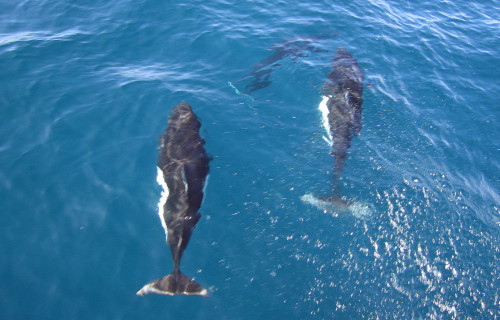
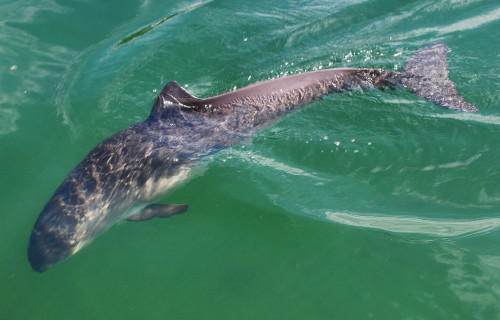
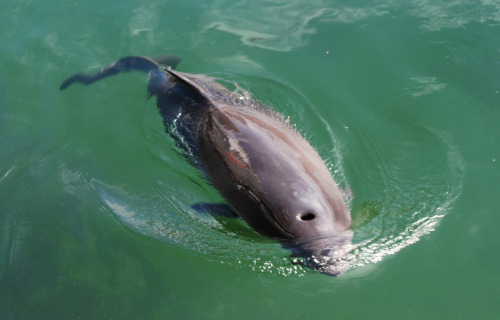
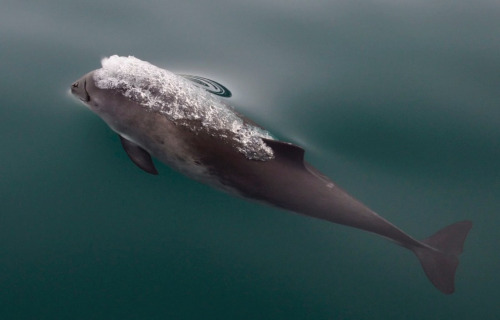
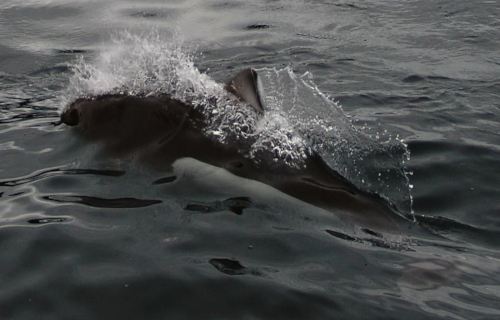
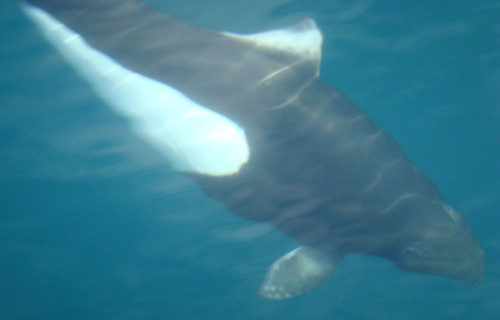
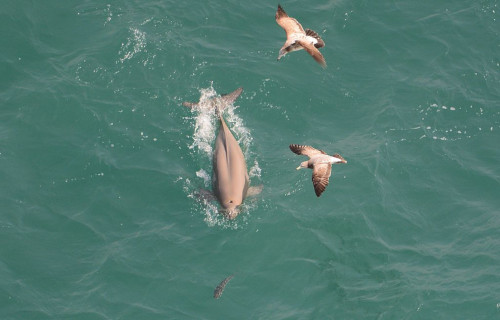
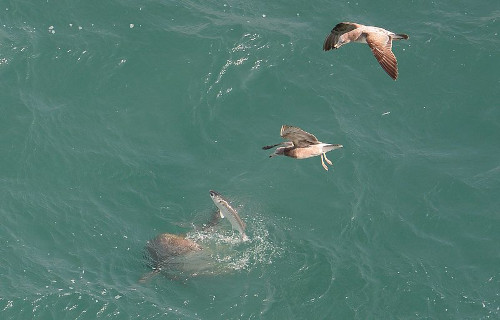









Leave a Reply